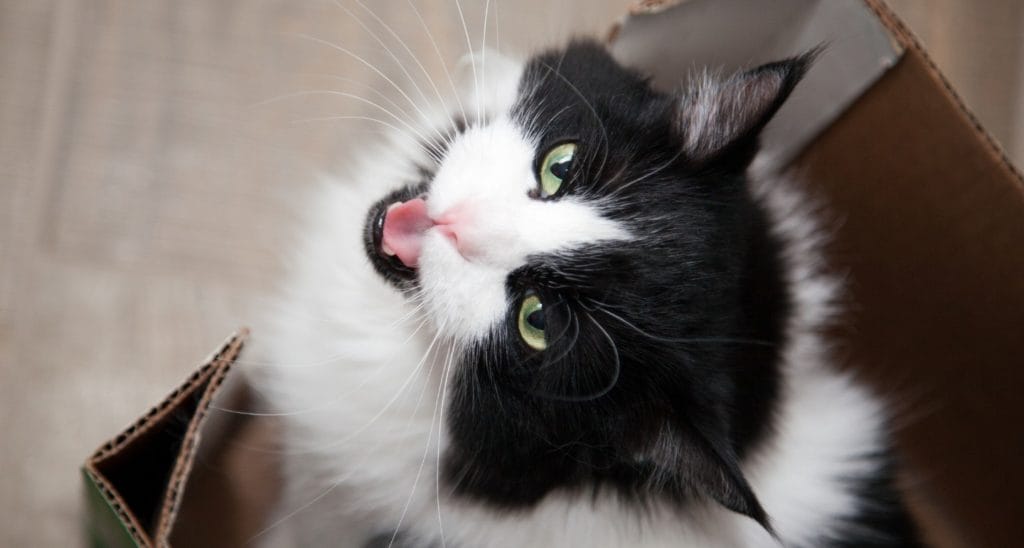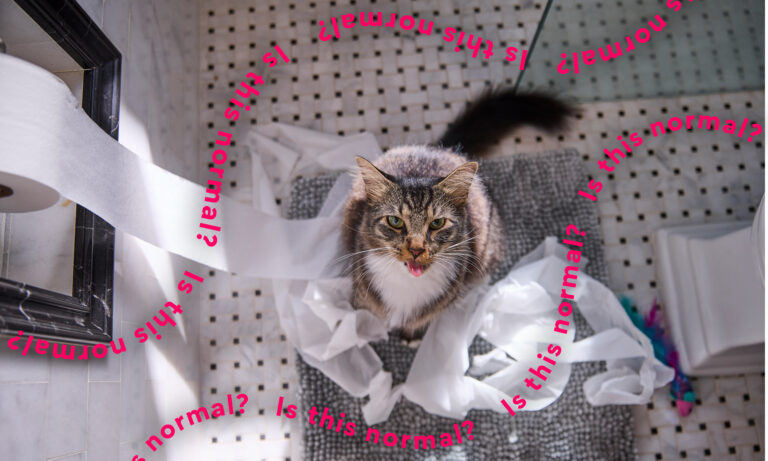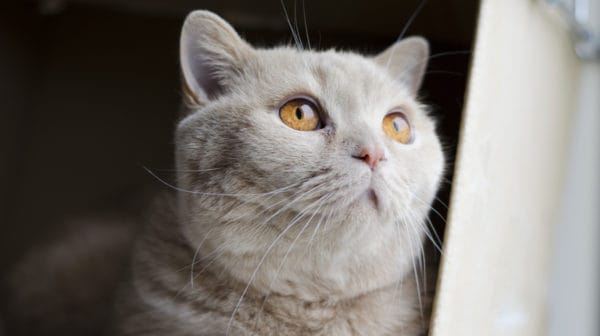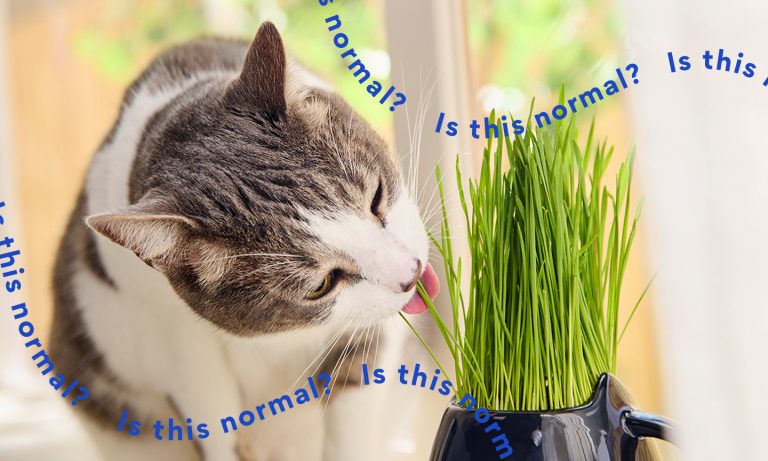Our feline friends are known for their meows, purrs, hisses and growls. These cat sounds reflect everything from contentment and calm to worry, fear and anger.
Sounds and cat body language communicate their emotional state of mind. If you listen closely, you’ll be able to understand what those seemingly random cat noises are all about and what your cat is saying to you.
Master these 12 most common cat sounds:
Cat Meow
Why Do Cats Meow?
Consider the meow an all-purpose cat sound. Cats meow:
- As a greeting (“Hi, Human!)
- To ask for something (“Where’s dinner?” or “Play with me!”)
- To express excitement or frustration (“I love my new toy!” or “Why aren’t you paying attention to me?!”)
And here’s a fun fact: “Meows are rarely used between cats,” says veterinary behaviorist Dr. Amy L. Pike, DACVB, IAABC-CDBC, owner of Animal Behavior Wellness Center, with locations in Fairfax and Richmond, Virginia. Adult cats save this sound for communicating with their people. Some cat breeds (like the Siamese) are known for being extra chatty.
Cat Purr
Quite possibly one of the most relaxing sounds ever, the purr is a low, continuous, rhythmic sound that slightly resembles a rumble. Some purrs can be barely perceptible, and some you can practically hear from a mile away.
Why Do Cats Purr?
Another common cat sound, the purr usually occurs when cats are happy and relaxed and can be a sign of contentment. Purrs are a positive response to being petted or groomed, or just curled up in your lap. But purrs don’t always communicate contentment. Dr. Pike confirms that cats also use purring as a self-soothing method if they’re experiencing pain, illness, anxiety or fear. That being said, the purr is one of the most mysterious of cat sounds.
Cat Trill
A mix between a meow and purr, the trill is often described as a friendly “mrrp” or “cat activation” sound. High-pitched and repetitive, it comes out in short bursts.
Why Do Cats Trill?
Cat Chirrup
This sequence of short, high-pitched calls is similar to that of a bird. Cat chirrups (also known as cat chirps) are relatively quiet even if the cat feels excited.
Why Do Cats Chirrup?
Cat Chatter
Why Do Cats Chatter?
A chattering cat is in hunting mode—whether they can get to their prey or not. If you’ve ever seen your cat doing this, chances are they spotted potential prey, and their hunting instincts have kicked in. It’s also thought that cats are mimicking prey (like birds) to attract the prey to them, Dr. Pike says.
Cat Hiss
This low, drawn-out sound resembles the hiss of a snake. It can be loud or soft, depending on the cat and the situation.
Why Do Cats Hiss?
Cat Spit
This sudden, short explosive burst of noise sounds like a more intense variation of a hiss.
Why Do Cats Spit?
Cat Snarl
Another sound that resembles a growl (as well as a hiss), a snarl is louder and higher-pitched.
Why Do Cats Snarl?
Like the hiss, the snarl is used when responding to a perceived threat. Dr. Pike says it’s common to hear this noise when two male cats are fighting. It can also be a sound of annoyance—if you’re touching an “off-limits” spot on the cat’s body, for example.
Cat Growl
Deep and almost rumbling, the growl is harsh and guttural. It can be long and drawn out and can also grow in intensity from start to finish.
Why Do Cats Growl?
Growling is a warning noise that can be directed toward other cats and animals, as well as humans. A growling cat is annoyed, frightened or angry. Some cats use growling to show possession of a favored item—like a food bowl—if another cat dares to come near it.
The growl is a clear sign that the cat wants whoever is triggering them to back off.
Cat Yowl
This disconcerting sound is like a growl but much more intense. It’s like a long, violent meow that is loud and high-pitched.
Why Do Cats Yowl?
A yowl is like an intensified growl, signaling that the cat is getting more and more upset. Growls often turn into yowls if the situation intensifies.
Dr. Pike says that yowling can also be a sign of pain or illness. Cats are usually excellent at hiding their pain, so take that yowling seriously and get them to the veterinarian to check for any injuries or illness.
Cat Caterwaul
If you’ve ever dealt with stray, unspayed female cats in your neighborhood, you’ll recognize this long, loud whine that can eventually sound like a scream. It’s all part of mating behavior.
Why Do Cats Caterwaul?
Cat Distress Call
Also called mewling, this sound is usually made by kittens under 1 month of age and resembles a high-pitched, screeching meow.
Why Do Cats Distress Call?
Cat Sounds Chart
Take a screenshot of this chart for easy access the next time your cat starts vocalizing.
Meow
Greeting, asking for something, excitement, frustration
Purr
Happy, content or used for self soothing
Trill
Thank you or greeting
Chirrup
“Hey! I’m here” or “Drat! I can’t get that bird!”
Chatter
On the hunt, “Come here, little birdy.”
Hiss
Surprised or threatened
Snarl
Threatened or annoyed
Growl
Annoyed, frightened or angry
Yowl
Very upset or in pain
Spit
Afraid, threatened
Caterwaul
Mating call made by females
Distress Call
Kittens make this sound when hungry or have wandered away from their mother or the rest of their litter
The bottom line is that the different sounds your cat makes—cute, silly or scary—are all a part of cat language. But when you know what those sounds mean, they make perfect sense and can help you communicate with your cat. Want to pounce on more cat behavior tips? Find out why cats knead.
Expert input provided by Amy Pike, DVM, DACVB, veterinary behaviorist and owner of Animal Behavior Wellness Center in Virginia.
Learn more about cat behavior:
Share:











